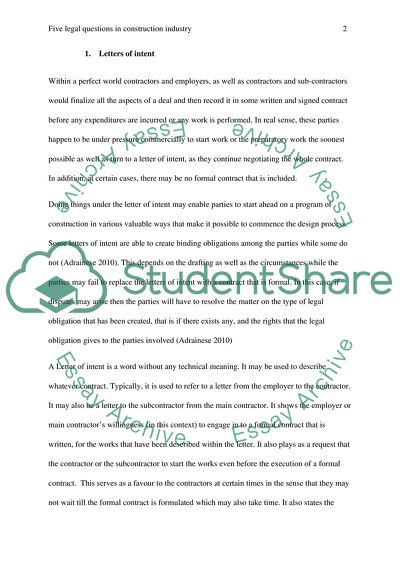Cite this document
(Five Legal Questions in Construction Industry Assignment Example | Topics and Well Written Essays - 5000 words, n.d.)
Five Legal Questions in Construction Industry Assignment Example | Topics and Well Written Essays - 5000 words. https://studentshare.org/engineering-and-construction/1845484-five-legal-questions-in-construction-industry
Five Legal Questions in Construction Industry Assignment Example | Topics and Well Written Essays - 5000 words. https://studentshare.org/engineering-and-construction/1845484-five-legal-questions-in-construction-industry
(Five Legal Questions in Construction Industry Assignment Example | Topics and Well Written Essays - 5000 Words)
Five Legal Questions in Construction Industry Assignment Example | Topics and Well Written Essays - 5000 Words. https://studentshare.org/engineering-and-construction/1845484-five-legal-questions-in-construction-industry.
Five Legal Questions in Construction Industry Assignment Example | Topics and Well Written Essays - 5000 Words. https://studentshare.org/engineering-and-construction/1845484-five-legal-questions-in-construction-industry.
“Five Legal Questions in Construction Industry Assignment Example | Topics and Well Written Essays - 5000 Words”. https://studentshare.org/engineering-and-construction/1845484-five-legal-questions-in-construction-industry.


